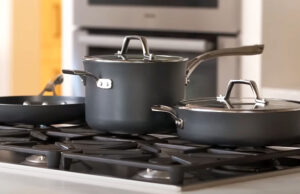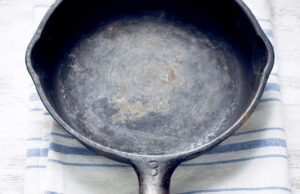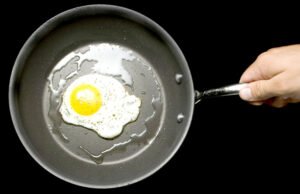As an Amazon Associate, I earn from qualifying purchases at no extra cost to you.
How to Check Vent on Whirlpool Dishwasher (Expert Tips)
Ever noticed your dishwasher leaving dishes a bit damp or smelling funny? It can be really annoying, especially after a long day. I had this issue last week, and it turned out the vent was blocked. Checking it isn’t as hard as it seems. In this article, we’ll explore exactly how to check vent on Whirlpool dishwasher and fix small problems before they get worse.
Inspect the vent for blockages and debris. Remove the lower dish rack to access the vent. Clean the vent with a soft cloth or brush. Check for proper airflow by running a short cycle. Ensure the vent flap moves freely and isn’t stuck. Examine hoses for clogs or damage. Verify electrical connections if vent has a fan. Test after cleaning to confirm proper drying performance.
Locate the Dishwasher Vent Easily
Finding the vent is the first thing you need to do. On most Whirlpool dishwashers, it sits near the top edge inside the tub. It often has a small flap or cover that hides it. When I first looked, I almost missed it because it blends with the interior.
Pull out the bottom rack slowly, and you should see a circular or rectangular vent opening. Sometimes crumbs or soap residue collect around it. It’s a bit surprising how quickly a vent can get blocked. Have a flashlight handy—it makes spotting debris much easier.
You can gently press the flap to see if it moves. A stuck flap might be why dishes aren’t drying properly. I once found a tiny piece of plastic lodged inside, causing the flap to stick. Even small obstructions can make a big difference in airflow.
Keep in mind vents vary by model. Checking your manual helps if it looks different. Some vents have a removable cover for cleaning, which is very convenient. Don’t worry if it looks tricky—it usually isn’t.
- Vent is near the top inside the dishwasher
- Pull out the lower rack to see it clearly
- Use a flashlight for better visibility
- Flap may be stuck from debris
Clear Any Debris From the Vent
Once located, the next thing is cleaning. I often find tiny food pieces or soap scum blocking airflow. Start by removing the vent cover if your model allows. It’s usually held by small clips or screws, easy to handle with a screwdriver.
Take a soft cloth or a small brush to wipe inside. Be gentle—plastic parts can crack if forced. I like using an old toothbrush to get corners clean. If you see sticky residue, a little warm water helps loosen it.
Check both sides of the vent flap. Sometimes dirt hides underneath, which is easy to miss. I learned this the hard way; dishes were still wet until I cleaned the back side. Cleaning here regularly prevents buildup.
After wiping, run your finger lightly to make sure the flap moves freely. You should feel smooth movement without resistance. A stuck flap can reduce drying efficiency significantly.
- Remove cover carefully
- Use soft cloth or brush
- Clean under flap too
- Ensure flap moves freely
Inspect Vent Hose for Blockages
Next, the vent hose needs attention. It carries hot air outside or into a small fan area depending on your model. Sometimes it kinks or food particles block it. I once found a tiny sponge lodged inside from someone washing dishes carelessly.
Disconnect the hose carefully if needed. Most Whirlpool models have clamps you can release with pliers. Take note of how it was attached—it’s easy to forget. You don’t want leaks or misalignment later.
Look through the hose to check for obstructions. A flashlight helps here too. If blocked, use a long flexible brush to push debris through. Avoid sharp objects that could puncture it.
Reattach the hose securely and double-check connections. Even a slightly loose hose can reduce airflow and cause poor drying. After reconnecting, test with a quick cycle to see improvements.
- Inspect hose for kinks
- Disconnect carefully if needed
- Clear any blockages
- Reattach securely
Test the Vent Flap Movement
Ensuring the flap moves freely is key. It should open and close without resistance. I usually wiggle it gently before running a cycle. Sometimes it feels stiff because of dried soap or grease.
If it sticks, clean it thoroughly with warm water and soap. Avoid oil-based cleaners—they can attract more dirt. I’ve noticed gentle movement restores performance quickly. Just a little care goes a long way.
Check if the flap closes completely. A partially open flap can waste energy and prevent proper drying. Once, I noticed mine wasn’t closing fully, and dishes stayed wet. Simple fix with a cloth and mild cleaning.
Try a short test cycle after adjustments. Pay attention to airflow and flap movement. It’s satisfying to see dishes come out dry and clean again.
- Flap should move freely
- Clean if sticky
- Ensure it closes fully
- Test with a short cycle
Run a Short Cycle to Check Airflow
Running a short cycle helps see if the vent works correctly. I usually pick a rinse or quick wash for testing. Watch for warm air escaping from the vent. If it’s blocked, airflow will be weak or nonexistent.
Listen for unusual sounds. A blocked vent can make a soft whistling or buzzing noise. I once ignored this, thinking it was normal, but airflow was low. Sounds are a subtle but helpful clue.
Check the dishes after the cycle. Are they drying better? Even small improvements indicate the vent is functioning. Keep an eye on residue or lingering odors—they hint at incomplete venting.
If issues remain, double-check the flap and hose. Sometimes two small problems together reduce airflow. Correcting both usually restores performance quickly.
- Run a short cycle
- Listen for airflow sounds
- Check dishes for dryness
- Recheck flap and hose if needed
Maintain Vent Regularly
Regular maintenance prevents vent problems. I clean mine every month or after heavy cooking. It only takes a few minutes but saves a lot of frustration. You’ll notice dishes dry faster and smells disappear.
Use warm water and a soft cloth for cleaning. Avoid harsh chemicals that can damage plastic. I also recommend wiping the exterior area around the vent—it collects dust and soap.
Check for small cracks or wear on the flap and hose. Replacing worn parts early prevents bigger issues. I once ignored a minor crack, and it caused a leak later. Prevention is key.
Keep a checklist for monthly vent care. Include wiping, checking flap movement, and inspecting the hose. It’s simple and keeps your dishwasher performing at its best.
- Clean vent monthly
- Use soft cloth, warm water
- Inspect flap and hose
- Replace worn parts
Final Thoughts
Checking the vent on your Whirlpool dishwasher is easier than most people think. A few simple inspections and cleaning steps can prevent damp dishes and odors. Pay attention to the flap, hose, and airflow. Small efforts make a big difference in drying efficiency. With regular care, your dishwasher will work smoothly and reliably for years.
| Task | Tools Needed | Tips |
|---|---|---|
| Locate vent | Flashlight | Remove lower rack for visibility |
| Clean vent flap | Soft cloth, toothbrush | Check both sides of flap |
| Inspect hose | Pliers, flashlight | Avoid sharp objects |
| Check flap movement | Hands | Flap should move freely |
| Run short cycle | Dishwasher | Listen for airflow, check dryness |
| Remove debris | Warm water, mild soap | Avoid harsh chemicals |
| Maintain monthly | Cloth, brush | Keep checklist for consistency |
| Replace worn parts | Screwdriver, replacement | Prevent leaks or blockages |
Frequently Asked Questions (FAQs)
Is it normal for the vent flap to stick sometimes?
Yes, it can happen occasionally, especially if soap or food residue builds up. Sticky flaps reduce airflow and drying efficiency. Gently clean with warm water and a soft cloth. Avoid harsh chemicals that may damage the plastic. Check movement regularly. Even a small obstruction can affect drying, so monitoring helps prevent long-term issues.
Can I remove the vent flap for cleaning?
Most Whirlpool models allow vent flap removal. Usually, it’s secured with clips or screws. Carefully remove and clean both sides with a soft cloth or brush. Ensure it moves freely before reinstalling. Remember how it was attached to avoid misalignment. A properly cleaned flap improves airflow and drying significantly.
Do I need special tools to check the vent?
No special tools are needed. A flashlight, soft cloth, small brush, and possibly pliers for hose clamps are usually enough. For screws, a basic screwdriver works. Keeping things simple makes the task easy. Even minimal tools can restore proper airflow and prevent damp dishes.
Is it safe to run the dishwasher with a partially blocked vent?
It’s generally safe, but drying efficiency drops. Dishes may remain wet, and odors can linger. Continuous use with a blocked vent can stress components like the heating element. Cleaning the vent ensures proper airflow and prevents long-term issues. Test after cleaning to confirm everything works well.
Can vent blockages cause odors in the dishwasher?
Yes, blockages trap moisture and food particles, creating odors. Cleaning the vent and hose regularly helps prevent smells. Running a rinse cycle after cleaning can remove lingering residues. I noticed a big difference once I cleared a minor blockage. Fresh air flow keeps the dishwasher smelling clean.
Do I need to check the vent hose too?
Absolutely. The hose carries hot air and can get blocked or kinked. Inspect visually and with a flashlight. Use a flexible brush if needed. Loose or damaged hoses reduce airflow. Proper hose inspection ensures dishes dry efficiently and prevents leaks.
Is cleaning the vent enough to fix drying problems?
Often, yes. Most drying issues are caused by debris or stuck flaps. Cleaning improves airflow and flap movement. Check the hose as well for a complete fix. Regular maintenance prevents recurring problems and keeps performance consistent.
Can improper vent maintenance damage the dishwasher?
Yes, ignoring vent care can lead to overheating, poor drying, and eventual component wear. Small debris may cause the flap or hose to fail. Regular checks and cleaning prevent bigger issues. Maintaining the vent keeps your dishwasher reliable and efficient for years.




